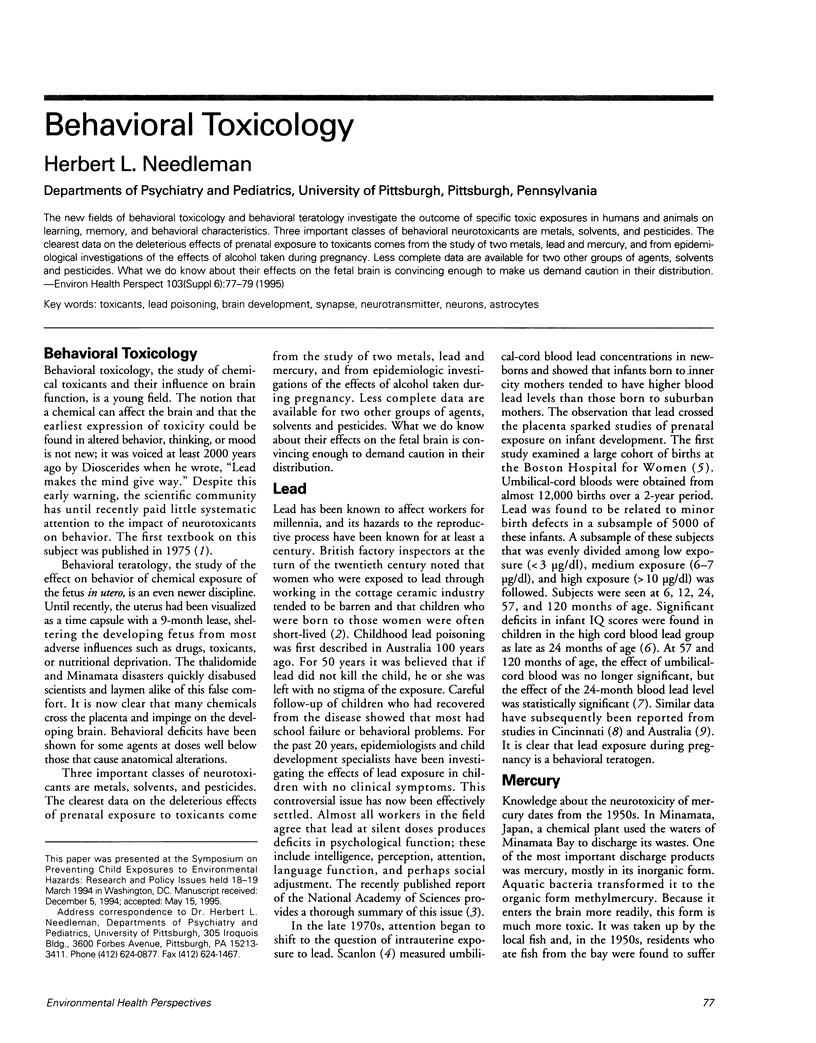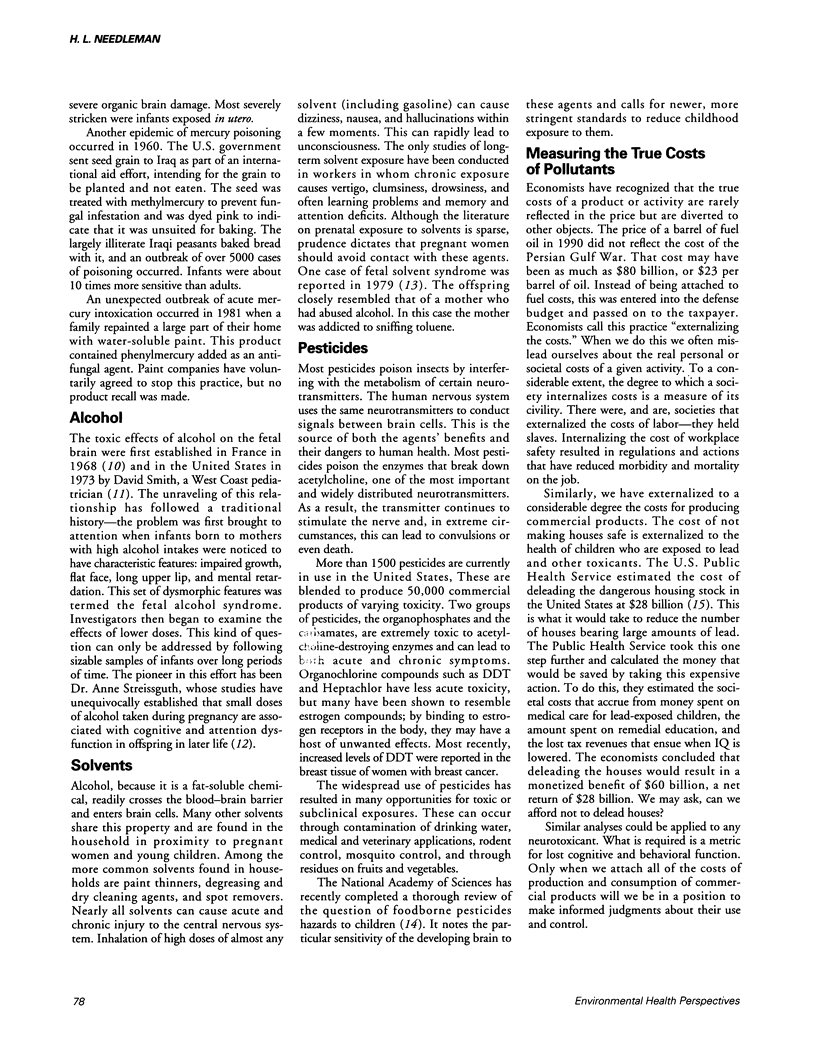Abstract
The new fields of behavioral toxicology and behavioral teratology investigate the outcome of specific toxic exposures in humans and animals on learning, memory, and behavioral characteristics. Three important classes of behavioral neurotoxicants are metals, solvents, and pesticides. The clearest data on the deleterious effects of prenatal exposure to toxicants comes from the study of two metals, lead and mercury, and from epidemiological investigations of the effects of alcohol taken during pregnancy. Less complete data are available for two other groups of agents, solvents and pesticides. What we do know about their effects on the fetal brain is convincing enough to make us demand caution in their distribution.
Full text
PDF


Selected References
These references are in PubMed. This may not be the complete list of references from this article.
- Baghurst P. A., McMichael A. J., Wigg N. R., Vimpani G. V., Robertson E. F., Roberts R. J., Tong S. L. Environmental exposure to lead and children's intelligence at the age of seven years. The Port Pirie Cohort Study. N Engl J Med. 1992 Oct 29;327(18):1279–1284. doi: 10.1056/NEJM199210293271805. [DOI] [PubMed] [Google Scholar]
- Bellinger D. C., Stiles K. M., Needleman H. L. Low-level lead exposure, intelligence and academic achievement: a long-term follow-up study. Pediatrics. 1992 Dec;90(6):855–861. [PubMed] [Google Scholar]
- Bellinger D., Leviton A., Waternaux C., Needleman H., Rabinowitz M. Longitudinal analyses of prenatal and postnatal lead exposure and early cognitive development. N Engl J Med. 1987 Apr 23;316(17):1037–1043. doi: 10.1056/NEJM198704233161701. [DOI] [PubMed] [Google Scholar]
- Dietrich K. N., Krafft K. M., Bornschein R. L., Hammond P. B., Berger O., Succop P. A., Bier M. Low-level fetal lead exposure effect on neurobehavioral development in early infancy. Pediatrics. 1987 Nov;80(5):721–730. [PubMed] [Google Scholar]
- Jones K. L., Smith D. W. Recognition of the fetal alcohol syndrome in early infancy. Lancet. 1973 Nov 3;302(7836):999–1001. doi: 10.1016/s0140-6736(73)91092-1. [DOI] [PubMed] [Google Scholar]
- Needleman H. L., Rabinowitz M., Leviton A., Linn S., Schoenbaum S. The relationship between prenatal exposure to lead and congenital anomalies. JAMA. 1984 Jun 8;251(22):2956–2959. [PubMed] [Google Scholar]
- Scanlon J. Umbilical cord blood lead concentration. Relationship to urban or suburban residency during gestation. Am J Dis Child. 1971 Apr;121(4):325–326. [PubMed] [Google Scholar]
- Streissguth A. P., Barr H. M., Sampson P. D., Parrish-Johnson J. C., Kirchner G. L., Martin D. C. Attention, distraction and reaction time at age 7 years and prenatal alcohol exposure. Neurobehav Toxicol Teratol. 1986 Nov-Dec;8(6):717–725. [PubMed] [Google Scholar]
- Toutant C., Lippmann S. Fetal solvents syndrome. Lancet. 1979 Jun 23;1(8130):1356–1356. doi: 10.1016/s0140-6736(79)91997-4. [DOI] [PubMed] [Google Scholar]


